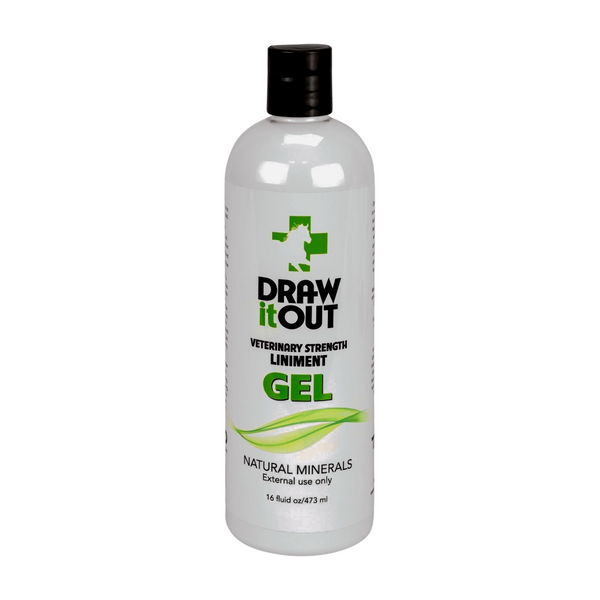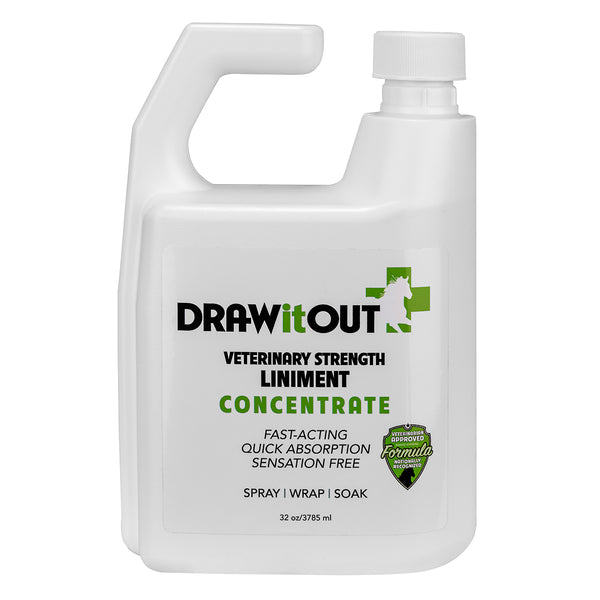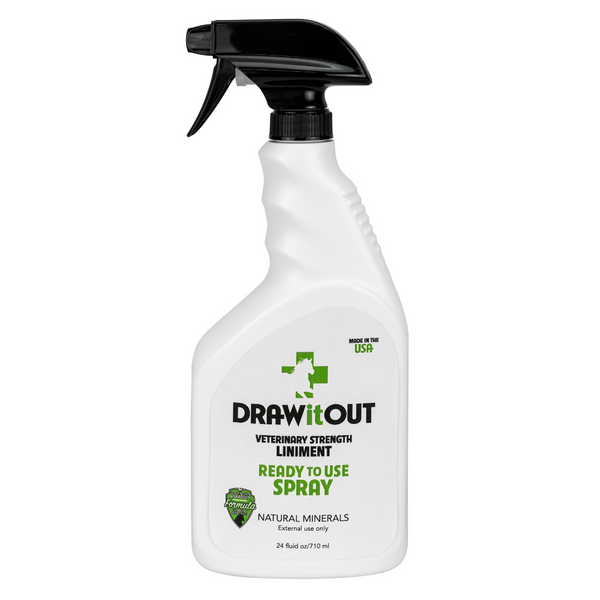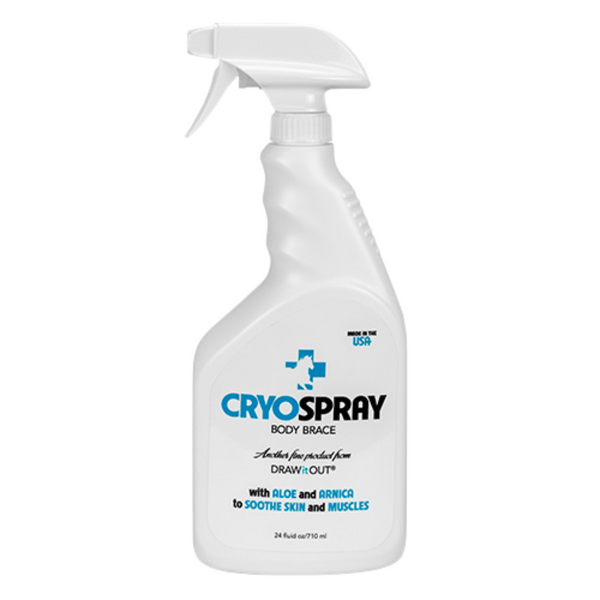Heaves, also known as Recurrent Airway Obstruction (RAO) or Chronic Obstructive Pulmonary Disease (COPD), is a common and chronic respiratory condition that affects horses, particularly those kept in stabled or poorly ventilated environments. It is characterized by inflammation and constriction of the airways, leading to symptoms such as coughing, labored breathing, and reduced performance. Managing heaves requires a multifaceted approach, including environmental management, medication, dietary adjustments, and preventive measures. In this extended article, we will delve into the in-depth aspects of diagnosing, treating, and preventing heaves in horses, while also emphasizing the importance of maintaining a clean environment, which can be facilitated by products like Draw It Out® SuperClean® Stall Cleaner.
I. Understanding Heaves
Heaves is primarily caused by the inhalation of allergens or irritants present in the horse's environment. Common triggers include dust, mold spores, pollen, and certain types of feed. When a horse with a predisposition to heaves inhales these irritants, it triggers an immune response, leading to inflammation and narrowing of the airways. Over time, this condition can become chronic, significantly impacting the horse's quality of life.
II. Diagnosis
Diagnosing heaves typically involves a combination of clinical signs and diagnostic tests:
Clinical Signs:
Persistent Coughing: One of the hallmark signs of heaves is a persistent cough, especially noticeable during exercise or when eating.
Increased Respiratory Rate and Effort: Horses with heaves often exhibit increased respiratory effort, seen as labored breathing, flared nostrils, and heaving sides.
Nasal Discharge: Nasal discharge, often clear or white in color, can also be observed.
Exercise Intolerance: Heaves can lead to exercise intolerance, causing a decrease in performance.
Diagnostic Tests:
Endoscopy: This procedure allows veterinarians to visualize the airways and assess the extent of inflammation.
Bronchoalveolar Lavage (BAL): BAL collects fluid from the airways to analyze the type and severity of inflammation.
Pulmonary Function Tests: These tests measure lung function, including airway resistance and lung capacity.
III. Treatment
Managing heaves is aimed at reducing airway inflammation, alleviating symptoms, and preventing future flare-ups. Treatment options include:
Environmental Management:
Provide Good Ventilation: Ensure the horse's living area has adequate airflow to reduce dust and allergen exposure.
Dust-Free Bedding: Use dust-free bedding materials, such as shredded paper or rubber mats, to minimize the inhalation of irritants.
Clean Feeding Environment: Store hay and feed in clean, dust-free environments.
Pasture Time: Turn the horse out to pasture whenever possible, as fresh air can help improve symptoms.
Medications:
Bronchodilators (e.g., albuterol or clenbuterol): These medications help relax airway muscles and improve airflow, providing relief from respiratory distress.
Corticosteroids (e.g., dexamethasone): Corticosteroids are used to reduce airway inflammation during acute flare-ups.
Non-steroidal Anti-inflammatory Drugs (NSAIDs): These can provide short-term relief from symptoms.
Mast Cell Stabilizers (e.g., cromolyn sodium): These may help reduce allergic reactions, which can exacerbate heaves.
Nutritional Adjustments:
Low-Dust Feed: Feed low-dust hay or hay alternatives, such as soaked hay cubes or pellets.
Pollen Sensitivity: If the horse is sensitive to pollen, limit or eliminate exposure to pasture grasses during high pollen seasons.
Maintain Healthy Body Weight: Ensure the horse maintains a healthy body weight, as obesity can exacerbate respiratory issues.
Supportive Care:
Exercise: Encourage regular, moderate exercise to improve lung function and overall fitness. However, avoid strenuous activities during acute flare-ups.
Monitoring: Monitor the horse's respiratory rate and condition closely, adjusting treatment as needed.
Vaccination:
Some horses with heaves may benefit from vaccination against respiratory diseases like influenza and strangles to reduce the risk of secondary infections.
Note:
To maintain a clean environment for your horse, consider using Draw It Out® SuperClean® Stall Cleaner. This product is specially formulated to provide a deep clean for horse stalls and living areas. It helps eliminate dust, dirt, and allergens, creating a healthier environment for horses with respiratory conditions like heaves. Regularly cleaning stalls and surrounding areas with Draw It Out® SuperClean® Stall Cleaner can significantly reduce the airborne irritants that trigger heaves and support the overall well-being of your horse.
IV. Preventing Heaves
Preventing heaves involves a combination of proper management practices and early intervention. Here are some strategies to reduce the risk:
Maintain a Clean Environment:
Draw It Out® SuperClean® Stall Cleaner: Use a product like Draw It Out® SuperClean® Stall Cleaner to maintain a clean and dust-free living environment for your horse. Regular cleaning helps reduce allergen exposure and supports respiratory health.
Good Ventilation: Keep stables, barns, and living areas well-ventilated to minimize dust and airborne irritants.
Dust Control Measures: Consider using industrial dust control measures such as air purifiers or misting systems for optimal air quality.
Choose Low-Dust Feeds:
Hay Alternatives: Opt for hay alternatives or high-quality dust-free hay to reduce the risk of heaves.
Soaking Hay: Soak hay before feeding to further reduce dust levels.
Regular Veterinary Care:
Schedule routine check-ups with your veterinarian to monitor respiratory health and catch early signs of heaves.
Follow your veterinarian's recommendations for vaccination and deworming to maintain overall health.
Minimize Stress:
Minimize stressors in the horse's environment, as stress can worsen respiratory symptoms.
Maintain a consistent daily routine and provide mental stimulation through enrichment activities.
Conclusion
Heaves can significantly impact a horse's quality of life, but with proper management, it is possible to control the condition and prevent flare-ups. Environmental management, medication, dietary adjustments, and preventive measures play crucial roles in managing heaves. Regular veterinary care and the use of products like Draw It Out® SuperClean® Stall Cleaner can help reduce the risk of heaves and ensure your horse's respiratory health for years to come. Always consult with a veterinarian for a tailored approach to managing heaves in your horse, and remember that a clean environment is a key component of effective management.
 View Product
View Product



















